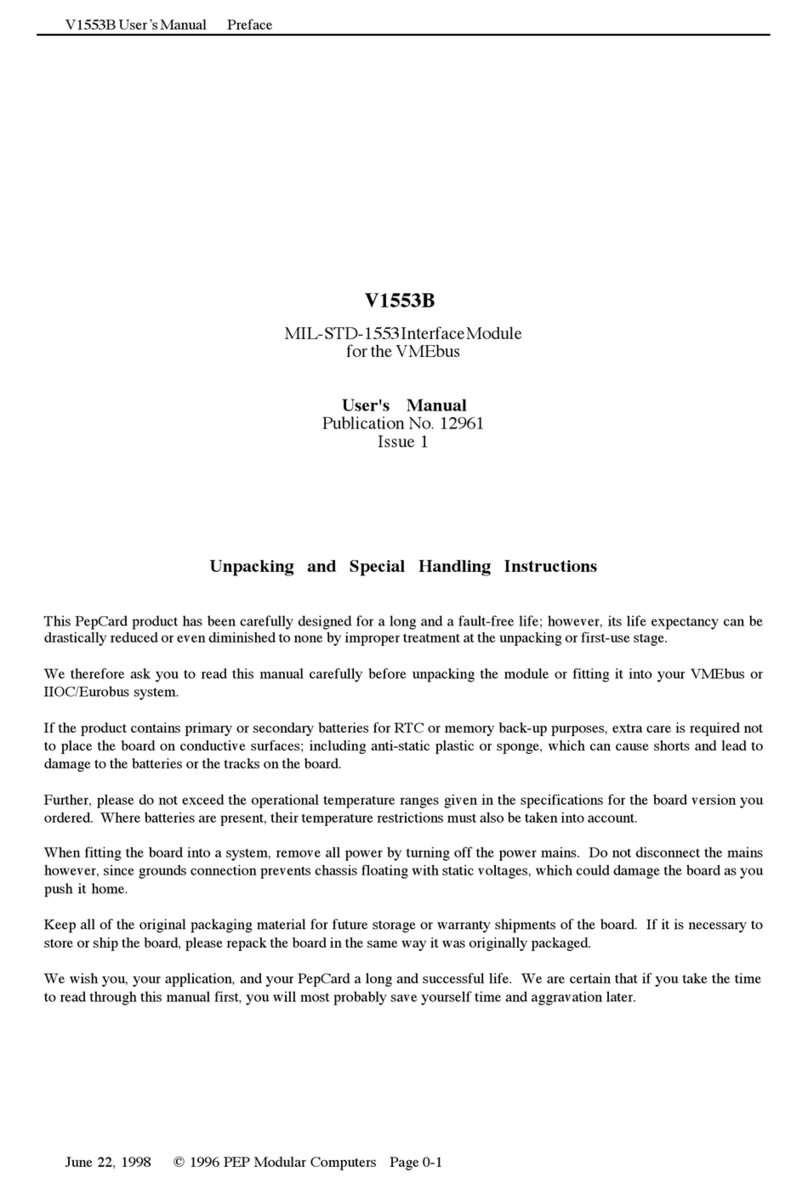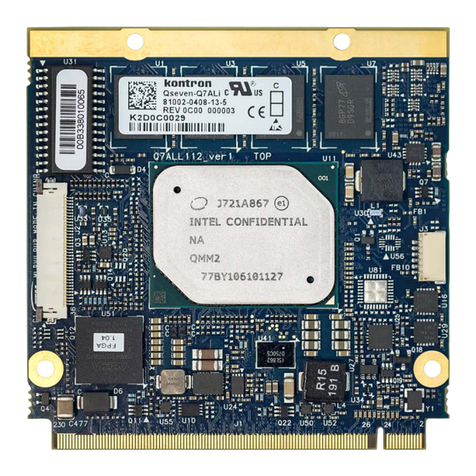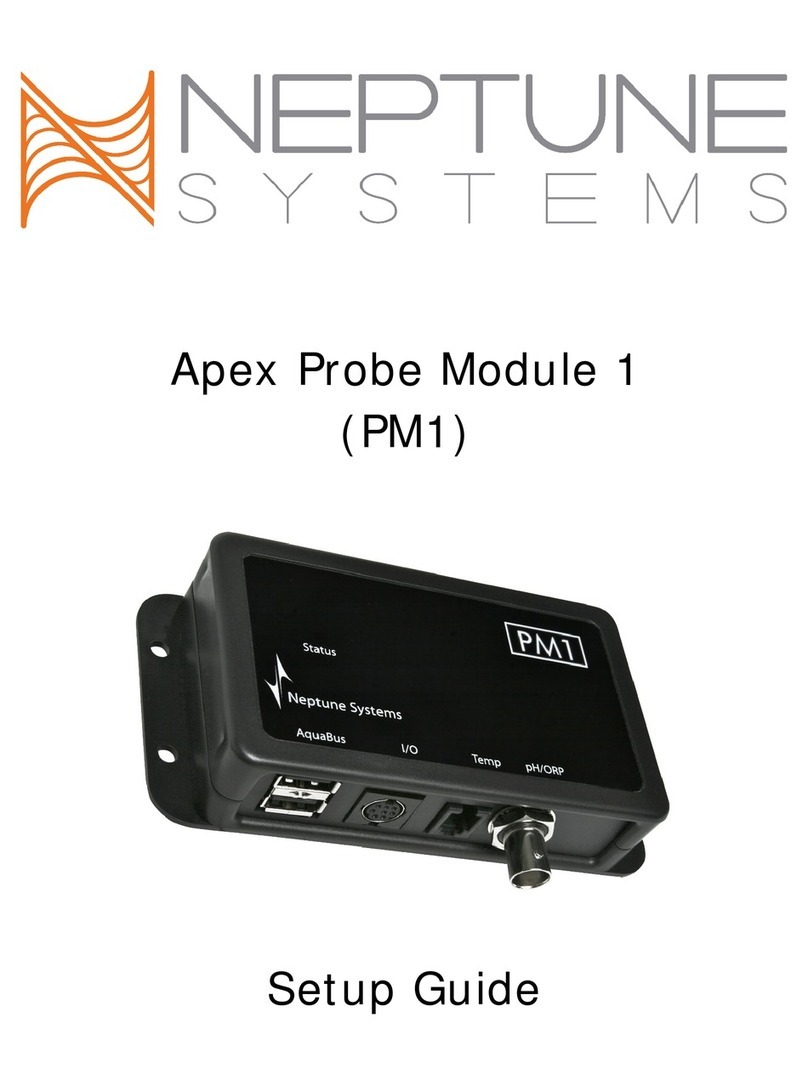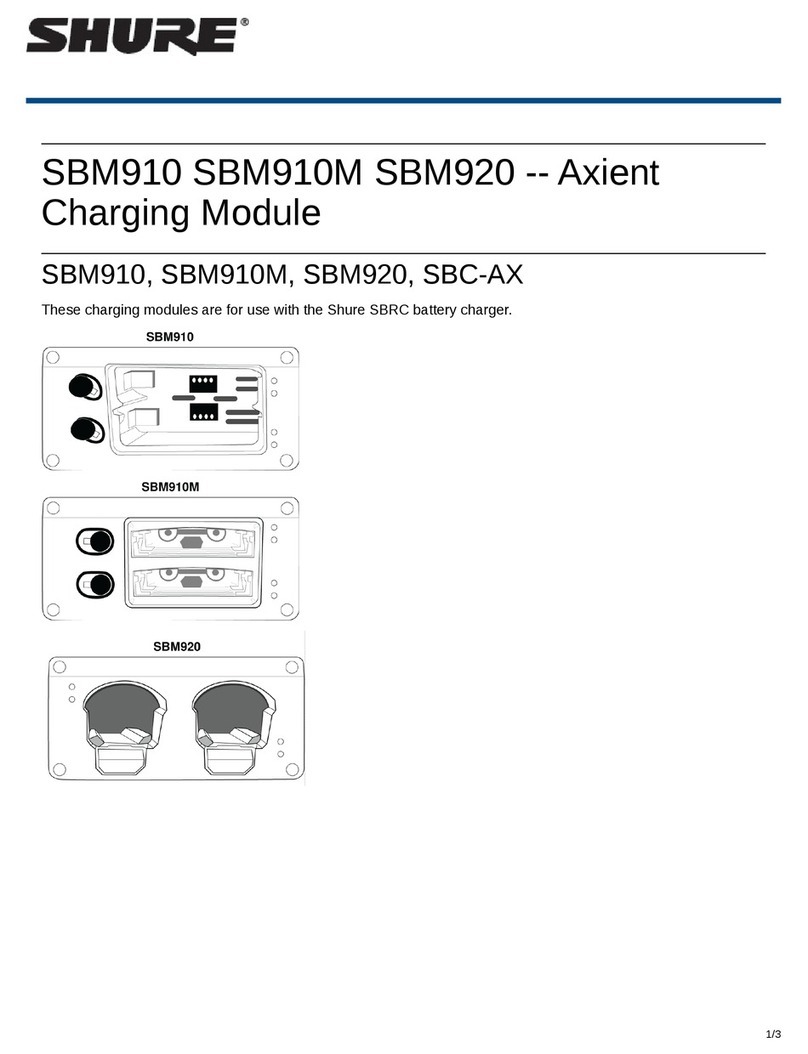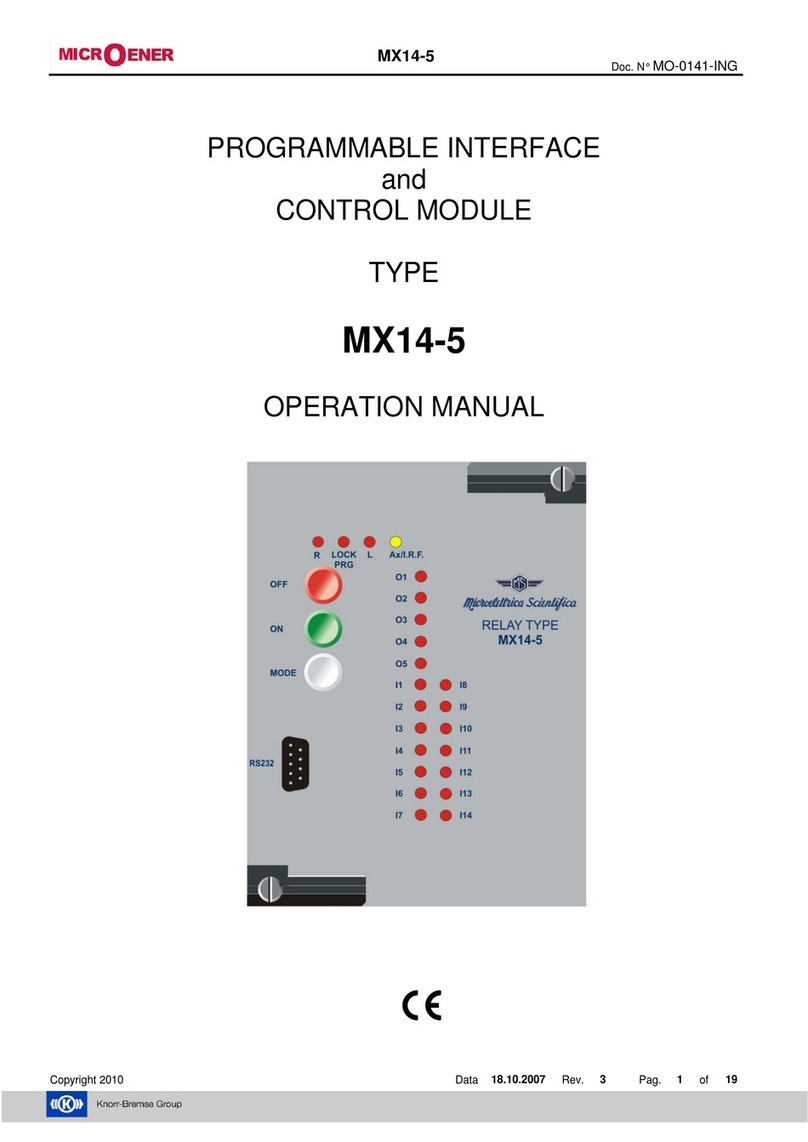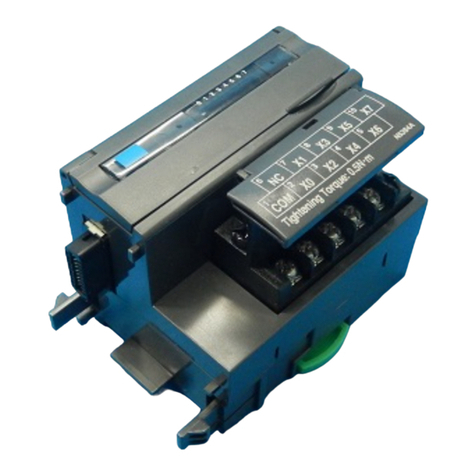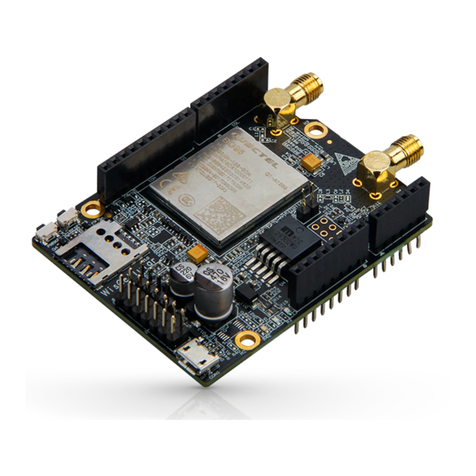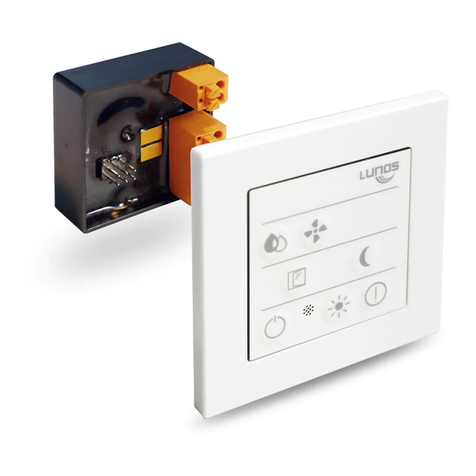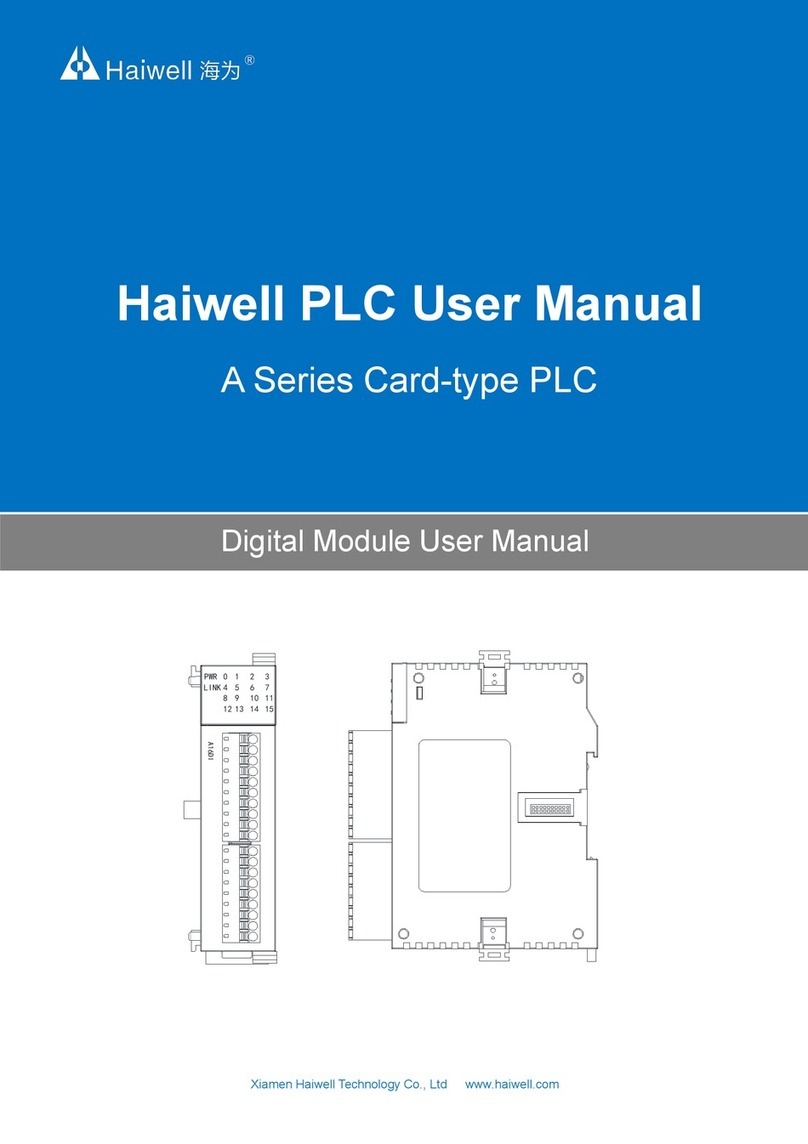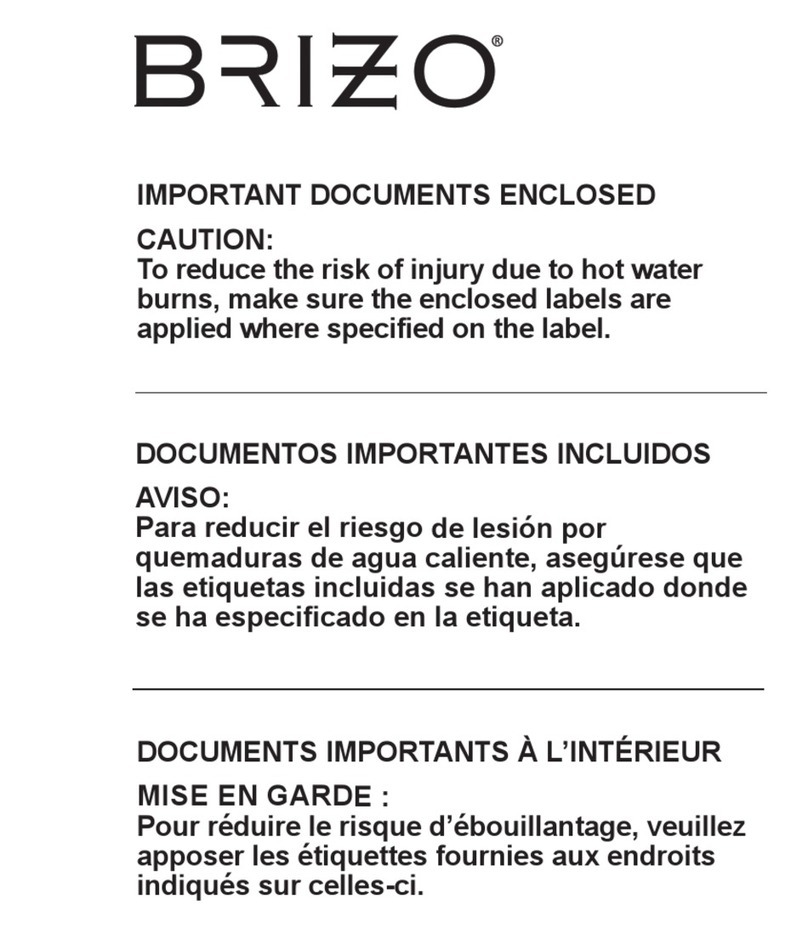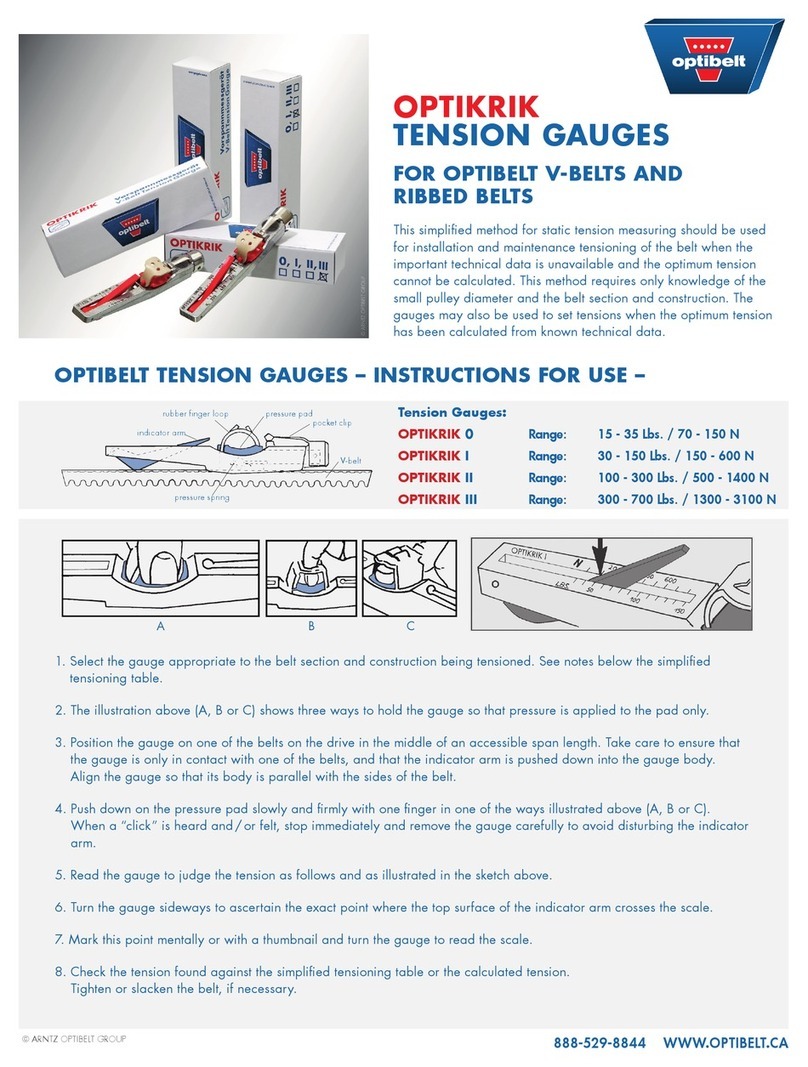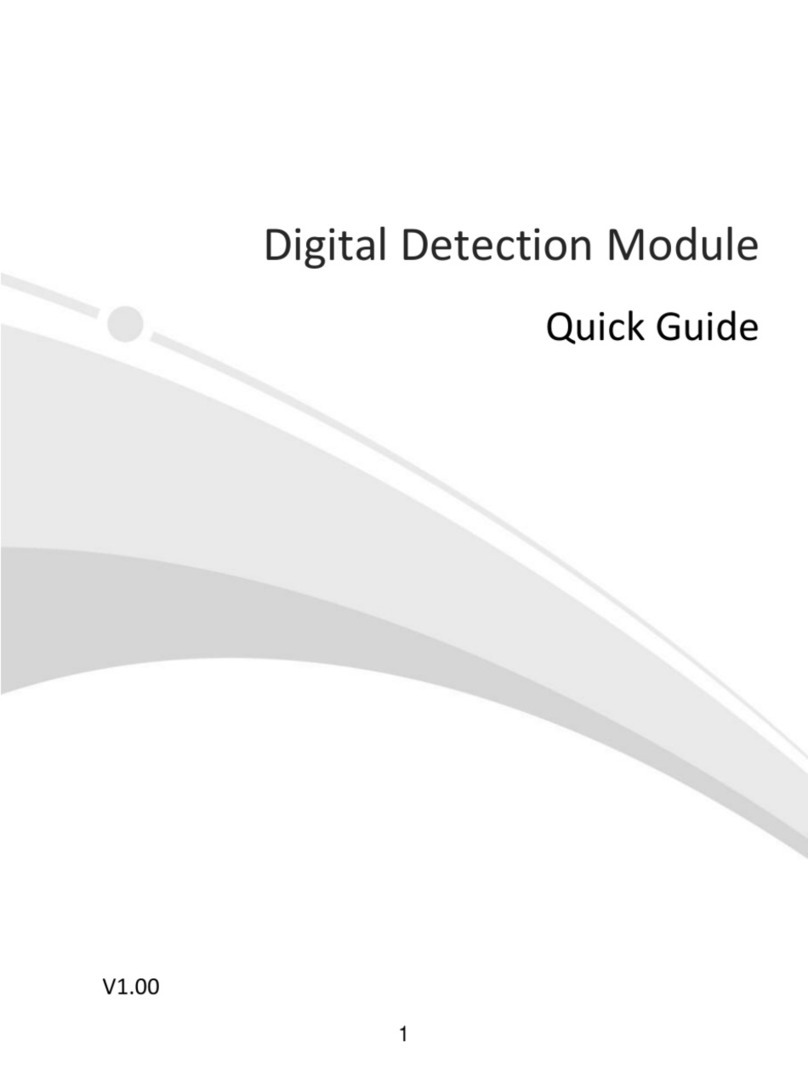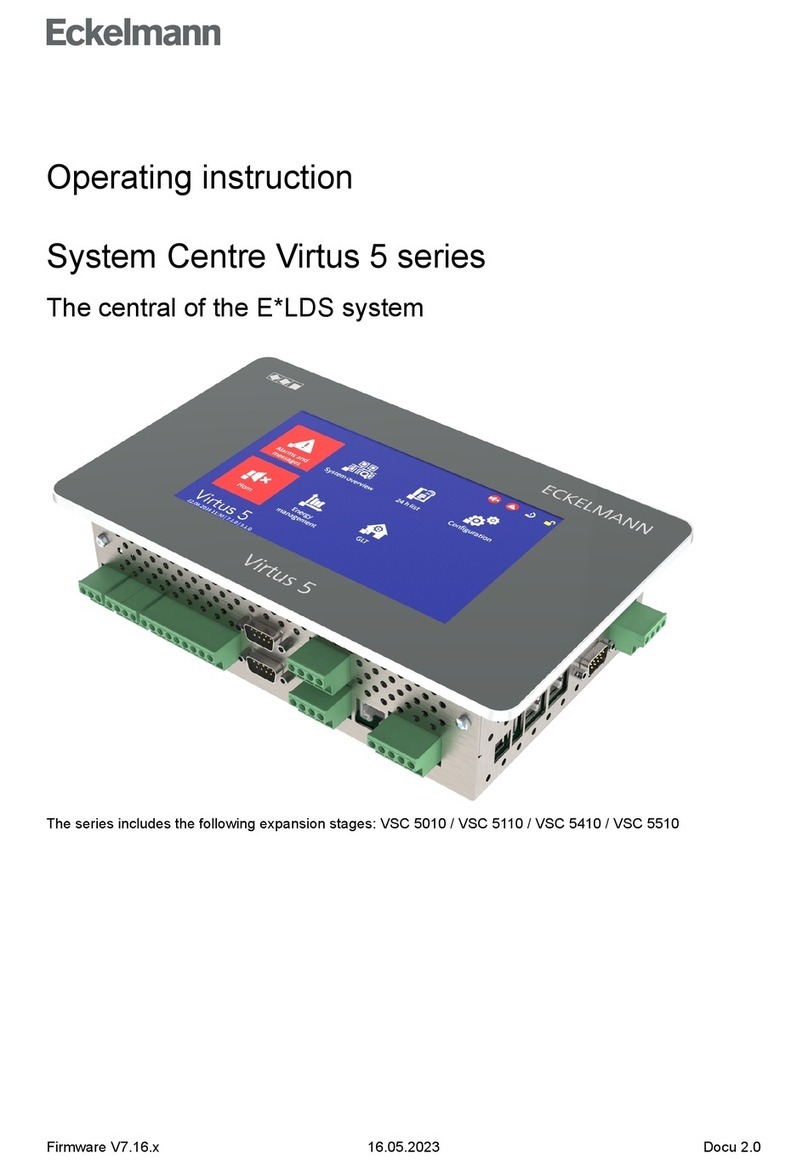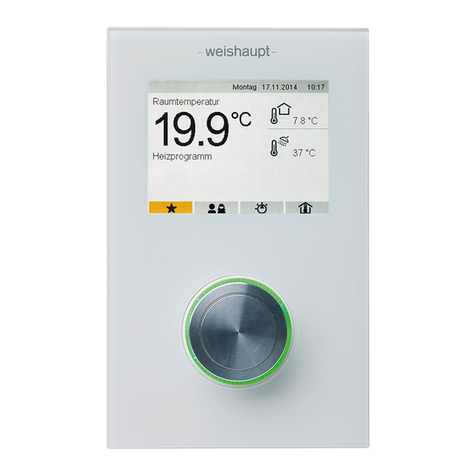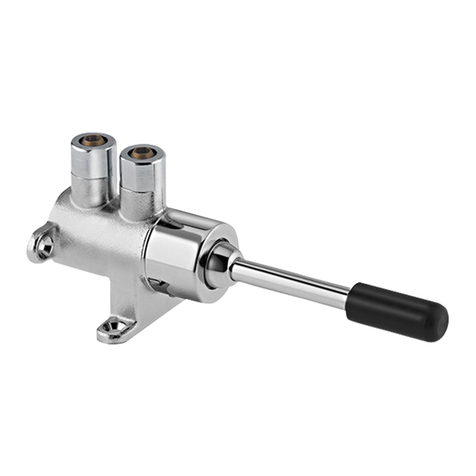Krohn-Hite 35 User manual

Model 35
170Hz to 25.6MHz, 24dB/Octave
Butterworth Tunable Active
Plug-In Filter Card
Operating Manual

Service and Warranty
Krohn-Hite Instruments are designed and manufactured in accordance with sound
engineering practices and should give long trouble-free service under normal operating
conditions. If your instrument fails to provide satisfactory service and you are unable to
locate the source of trouble, contact our Service Department at (508) 580-1660, giving all
the information available concerning the failure.
DO NOT return the instrument without our written or verbal authorization to do so. After
contacting us, we will issue a Return Authorization Number which should be referenced on
the packing slip and purchase order. In most cases, we will be able to supply you with the
information necessary to repair the instrument, avoiding any transportation problems and
costs. When it becomes necessary to return the instrument to the factory, kindly pack it
carefully and ship it to us prepaid.
All Krohn-Hite products are warranted against defective materials and workmanship. This
warranty applies for a period of one year from the date of delivery to the Original Purchaser.
Any instrument that is found within the one year warranty period not to meet these
standards, will be repaired or replaced. This warranty does not apply to electron tubes,
fuses or batteries. No other warranty is expressed or implied.
Krohn-Hite Corporation reserves the right to make design changes at any time without
incurring any obligation to incorporate these changes in instruments previously purchased.
Modifications to this instrument must not be made without the written consent of an
authorized employee of Krohn-Hite Corporation.

MODEL
35
170Hz
to
25.6MHz
LOW-PASS
BUTTERWORTH
PLUG-IN
FILTER
CARD
OPERATING AND
MAINTENANCE
MANDL
"
..
PLUG-IN
FILTER
CARDS
MODEL SIN MODEL SIN
MODEL SIN MODEL SIN
MODeL
SIN MODEL SIN
MODEL SIN MODEL SIN
MODEL SIN MODEL SIN
MODE/. SIN MODEL SIN
MODEL SIN MODEL SIN
MODEL SIN MODEL SIN
I..FL..I
KRCHN-HITE
~
COFlPOFl.A.TION
255 Bodwell Street, Avon, MA 02322-9987
Tel: (508)580-1660; Fax: (508)583-8989

Table of Contents Model 35
Table of
Contents
1.0
GENERAL
DESCRIPTION
1-1
1.1
INTRODUCTION
1-1
1.2
SPECIFICATIONS
1-1
1.2.1
Filter
Ch
ar
ac
te
rist ics 1-1
1.2.2
Input
1-1
1.2.3
Output
1-2
1.2.4
General
1-2
2.0
OPERATION
2-1
2.1
INTRODUCTION
2-1
2.2
TURN-ON
PROCEDURE
2-1
2.3
SELF-TEST
fEATURE
2-1
2.4
JUMPER
SETTINGS
FOR
FRONT
AND
REAR
PANEL
OPERATION
2-2
2.5
FRONT
PANEL
CONTROLS
AND
DISPLAY
2-2
2.5.1
Data
Keys
2-2
2.5.2
[MODE]
Key
2-2
2.5.3
[TYPE]
Key
2-2
2.5.4
Channel
2-2
2
.5.5
Gain
Set
2-2
2.5.6
Input
Overload
2-2
2.5.7
Output
Overload
2-2
2.5.g
ICE]
Clear
Entry
Key
2-3
2.5.9
lALL
CHANNEL]
Key
2-3
2.5.10
Input
Ohms
(Labeled
White)
2-3
3.0
I£EE-488
STn
(GPID)
PROGRAMMING
3-1
3.1
INTRODUCTION
3-1
3.2
FILTER
TYPE
3-1
3.3
MODE
OF
OPERATION
" 3-1
3.4
DEVICE
CLEAR
3-1
4.0
INCOMING
ACCEPTANCE
4-1
4.1
INTRODUCTION
4-1
4.2
TEST
EQUlPMENT
REQUIRED
4-1
4.3
INITIAL
SETTINGS
4-1
4.4
DC
OUTPUT
LEVEL
CHECKS
4-1
4.5
GAIN
ACCURACY
CHECK
4-2
4.6
DISTORTION
CHECK
4-2
4.7
SQUAREWAVE
RISE
AND
FALL
TIME
CHECK
4-2
4.8
FREQUENCY
CALIBRATION
CHECK
4-2
4.9
WIDEBAND
NOISF
CH
ECK
4-3
4.10
STOPBAND
ATTENUATION
CHE CK
4-3

Model 35 Table of Contents
ii

Table of Contents Model 35
Model 35 Plug-In Filter Card
iii

Moclel35 Section 1 - General Description
SECTION
1
GENERAL
DESCRIPTION
1.1
INTRODUCTION
The
Model
35 is a low-pass,
Butterworth
(maximally flat) filler card, used in
the
Models
3905B
and
3916B
mainframes, providing 24GB/octave rolloffwith a minimum
stopband
attenuation
of
up to lOOdB.
The
Model
35 covers
the
frequency range
of
170Hz
to
25.6MHz
with 2Vzdigits
of
resolution.
The filter card has selectable AC
or
DC couplingand selectable 1M
or
50
ohm
impedance.
Programmable
input
gains
of
up to 20dB and
output
gains
of
up to 26dB
are
standard.
The
Mode135 also has
the
capability to be configured in an Amplifier By-Pass
mode
to
operate
as an amplifier,
by-passing
the
filter. This gives
the
user
the
ability
to
amplify
without
filtering
when
so desired.
The
Model
35 is
one
of
many Krohn-Hite filter cards used in
conjunction
with two
GPIB
programmable
mainframes;
the
3 1/2' high
Model
3905B (5 plug-in cardchassis)
or
the
Model
3916B (16 plug-in
card
chassis).
1.2
SPECIFICATIONS
1.2.1
FILTER
CHARACTERISTICS
Filter
Type: 4-Pole,
Butterworth,
Low-Pass.
Tunable
Cutoff
Frequency
Range:
170Hz
(0
25.6MHz
.
Frequency Response:
FreQuency Range Resolution
170Hz \0 2.56kHz 10Hz
2,6kHz to 25.6kHz 100Hz
26kHz to 256kHz 1kHz
260kHz to 2,56MHz 10kHz
2.6MHz \0 25.6MHz 100kHz
Cutoff
Frequency
Accuracy:
±2%
to 2.56MHz,
=5%
to 25.6MHz.
Attenuation
Slope: 24dB/Octave.
Stopband
Attenuation:
100dB to 1MHz, 80dB at 1
OM
Hz,70dB at
30MHz,
60dB at
50MHz,
50dB
to lOOMHz.
Amplified Bypass
Mode
Bandwidth:
>50MHz..
Amplified Bypass Mode
Rise
and
Fall Time:
<7ns
with OdB
input
gain 6dB
output
gain, < IOns with +20dB
input
or
output
gain.
<5%
ringing
or
overshoot.
1.2.2
INPUT
Input/Output
Coupling:
AC
or
DC. AC coupling
cutoff
is approximately
16Hz
at
the
input
and
10Hz
at
the
output
with a 50Q termination.
Note
that
the
internal 50Q input
termination
is
before
the
AC coupling.
Input
Impedance:
Selectable
1MQ
or
50Q,
=2%,
shunted
by 45pF.
Passband
Response: =O.2dB up to 2.56MHz, =0.5dB to 25.6MHz.
Input
Gain (Pre-Filter):
OdB,
+ lOdB, +2OdB =O.ldB.
Maximum
Input
Signal: = 1.5V
peak
with OdB input gain, reduced in
proportion
to
input
gain selected.
Input
DC Blocking Voltage:
200V
Note
that
the
internal
input
termination
is
before
the
AC
coupling
and
can
only
tolerate
7Vrms when ON.
1-1

Section 1 - General Description Model 35
Maximum
Input
Without
Damage: 12Vrmswith
input
terminator
OFF,
7Vrms
with
input
terminator
ON.
1.2.3
OUTPUT
Maxim
um
Ou
tpu
t
Signal:
±3V
peak
open
cireuit, ± 1.5V
peak
in to 50Q.
Output
Gain (Post-Filter): (kiB,HidE, +
2Ck:iB,
+26dB, ± 0.1dB.
Output
Impedance:
SOQ,
±2%.
Distortion
(lVrms
sinewave):
>-6O<1B
belowsignal up to
100kHz
(0.1%).All
harmonics
below
50dB
to
1MHz;
below 40dB
above
1
MHz.
Output
DC
Offset:
Adjustable
to
Zero.
Output
DC
Offset
Drift:
±0.5mVtC
referred
to input.
Noise
Spectral
Density
(10kHz
to
l00MHz
referred
to input):
Below-128dBmlHz
into 50 ohms.
This
translates
into
a
wideband
noise
power
or
voltage for a
30MHz
BW
of
below
-5
3dBm
or
O.50mVrms
referred
to input.
Spurious
Signals:
Below --80dBm to
65MHz
; below
-75dBm
to
l00MHz.
Referred
to
input,
represented
in
voltage form:
22J.lV
and
40.uV respectively.
1.2.4
GENERAL
Input/Output
Connectors
:
BNe.
Power:8 watts.
Weight
1.75 lbs, (.8kg) net.
Operating
Temperature:
O°C
to
50°e.
Specifications
apply
at 25°C ±10°C,
Specifications subject to
change
without
notice.
NOTE: The Model 35filter card
must
be used with the Model 39058 or 39168 mainframes.
1-2

Model 35 Section 2 - Operation
SECTION
2
OPERATION
2.1
INTRODUCTION
The
Model 35 low-pass filter card covers
the
frequency
range
from 170Hz to 25.6MHz.
It
is
one
of
a series
of
filter cards available for
the
5 plug-in card mainframe, Model 3905B
or
the
16 plug-in card
mainframe
, Model
3916B mainframe. All filter
parameters
are
programmablevia
the
mainframes
front
panel
or
remotely
over
the
IEEE-488
(GPIB)
bus.
For
detailed information
of
the
front panel controls
and
remote
programming.
refer
to
Section 2
and
3
of
the
Model 3905N/3916B mainframe's
Operating
and
Maintenance
Manual. Section 2.4
of
this manual briefly describes
the
operation
of
the
principal front
panel
controls
and
data
key
operation.
2.2
TURN-ON
PROCEDURE
a.
The
line voltage
range
of
the
Model
3905B/3916B mainframe has
been
preset
at
the
factory for
either
115V
or
230V
operation.
This range switch is located internally if a line voltage
change
isrequired.
Check
to
see
that
a fuse with
the
correct
rating is in
the
fuse receptacle.
b.
Make
certain
that
the
POWER
switch on
the
front panel
of
the
unit is in
the
OFF
position.
c. Plug
the
line cord into
the
unit first,
then
into an ac outlet.
CAUTION
..
:.':....
':'.'
.,.;.
',:.
For safetypurposes,
the
line cord
must
be connected to a
grounded
3-t
enninal
ac outlet. Because
of
'potentiallydangerous voltages thai
exist within the
mainframe,
the covers
should
be
removed
only
by
qualifiedpersonnel.
d. If
the
Model
3905B/3916B
is remotely programmed via
the
IE
EE-488 (GPIB) bus,
connect
the
bus cable
to
the
rear
panel 24 position
"D"
connector
at this time. Programming information is provided in Section 3
of
the
Model
3905B/3916B
Operating
and
Maintenance
Manual, with additional
information
in Section 3
of
this manual.
e.
The
POWER
switch is a toggle type, located on
the
front panel
of
the
Model
3905B/3916B.
After
familiarizi ng yourselfwith
the
self-test feat ure described next,
turn-on
the
Model
3905B/3916B.
2.3
SELF·TEST
FEATURE
When
tur
ned
0 n,
the
Model
3905B/3916B mieroproccssor pcrftirrnsa Scif
-Tcs
t routine
whereby
the
en tire
RAM
and
ROM
operation
is verified.
During
the
test,
the
front panel L
EDs
and display will light up sequentially.
If
there
is a malfunction in
the
microprocessor, such as a defective
RAM
or
ROM.
the
sequence
will
stop
and
the
word
"bAd"
will
appear
in
the
display, followed by a
number
from 1 to 3.
Refer
to Section 7.6, Digital Circuit
Maintenance, to find which
RAM
or
ROM
isdefective; otherwise,
when
the
Self
-Test
program
is
complete
,
the
Model 3905B/3916B will
return
to
the
last set-up prior to turning
off
the
unit.
The
Model
3905B/3916B is now ready to be programmed for
operation.
2-1

Section 2 - Operation Model 35
2.4
JUMPER
SETIINGS
FOR
FRONT
AND
REAR
PANEL
OPERATION
Toachieve
clean
high frequency signal
performance
from
the
rear
panel
input
and
output
ENCs,
it is necessary
to disconnect
the
cabling connecting
the
front panel ENCs by moving
the
two
jumpers
on
jumper
blocks J201
(for input) and J517
(for
output)
shown in Figure 2.1 below.
The
Model 35 filter cards
are
shipped
with
the
jumpers
set
with front panel BNG; active.
REAR ONLY
FRONT &
REAR
INPUT
OUTPUT
, -, r
~
, <,
~
~
<,
-REAR ONLY
G[ID
-
[]I]]
0
~0 El 0 FRONT &
-/
<,
-0 r
~
, -0 0 REAR
/
~
-,
<,
Figure 2.1 Front and Rear panel Jumper Blocks
2.5
FRONT
PANEL
CONTROLS
AND DISPLAY
2.5.1 DATA
KEYS
Data
entry
keyboard controls, [0]-[9] and [.],and associated 4digitdisplay
set
the
numericvalue
of
the
parameter
selected. I
fa
cutofffreg uency
of
1.5
kHz
isreguired, press
the
[1]l-][5]
data
keys,
then
press
[Kl
LO]
and
[FREQJ
parameter
keys.
The
cutoff
frequency will be indicated in
the
4 digit display.
2.5.2
[MODE}
KEY
Indicates
the
mode
of
operation
in
the
channel displayed, alternating
between
low-pass, "L.P."
and
amplifier
by-pass,
"GAin",
which disconnects
the
filter.
2.5.3
[TYPE]
KEY
Displays "bu.", indicating
Butterworth
filter.
2.5.4
CHANNEL
The
two channel controls [ft][
~
] and associated display, increment
or
decrement
the
channel
setting.
When
held ,
the
Model 3905B/3916B willcycle
through
all
the
channe
ls continuously.
2.5.5
GAIN
SET
Input and OutpuL gain is controlled by
the
two
GAIN
SET
controls [ft][
~
] and associated two digit displays.
Input
gain is selectable to
OdB,
lOdB
or
2OdB.
Output
gain is selectable to OdB, 6dB, 20dB
or
26dB.
2.5.6
INPUT
OVERLOAD
With OdB
Input
gain,
the
input overload indicator will
turn
on at approximately ± 1.6V
peak.
At
lOdE,
approximately ±O.5V peak. At 20dB, approximately ::to.16V peak.
2.5.7
OUTPUT
OVERLOAD
The
output
overload indicator will light at approximately
±3.2V
peak
output
with
the
output
not
terminated,
or
± 1.6V
peak
output
with
the
output
terminated, for all gain settings except OdB
output
gain.
For
OdB
output
gain
the
values
are
1/2.

Model 35 Section 2 - Operation
2.5.8
[CEl
CLEAR
ENTRY
KEY
Display will reset to
the
previous
entry
or toggle between present and previous settings.
2.5.9
[ALL
CHANNEL]
KEY
When
on,
parameter
changes will be
made
simultaneously to all identical filter channels.
2.5.10
INPUT
OHMS
(Labeled
White)
Pressing
[SECOND
FUNCTION],
then
input
GAIN
SET
[[
~
][
~
], will indicate in
the
main display
the
current
input termination setting;
either
"e50&" (50 ohms) or "bhib" (1M).
If
"950&" is in
the
display,
repeat
the
[SECOND
FUNCTION]
GAIN
SET
[[
fi][
U]only again,
then
the
inputtermination will be switched to "ehie.".
2-3

Section 2 - Operation Model 35
This
page
intentionally
left
blank.
2-4

Model 35 Section 3 - IEEE-488 STD (GPIB) Programming
SECTION
3
IEEE-488
STD
(GPIB)
PROGRAMMING
3.1
INTRODUCTION
Complete
informationon
remote
programming isincorporated in
the
Model 3905B/3916B
mainframe
Operat-
ing and
Maintenance
Manual. Detailed information
about
the
filter type, modes
of
operation
and
device
clear
command
not
described in
the
3905B/3916B manual
are
specified below.
3.2
FILTER
TYPE
---
- ----+)
DJ
Butterworth I
3.3
MODE
OF
OPERATION
-Low-Pass
2 Amplifier
By-Pass
3.4
DEVICE
CLEAR
) INPUT
GAJN
OdB
OUTPUT}3A1N:'. 6dB
R
E
SP
Or-:
J
S
~
'
:'"
Butterworth
MODE
..
···
Low-Pass
CUTOFF FREQUENCY 1MHz
COUPLING: ;.; DC
INPUT OHMS 50 Ohms
3-1

Section 3 - IEEE-488 STD (GPfB) Programming Model 35
This
page
intentionafly
left
blank.
3-2

Model 35 Section 4 - Incoming Acceptance
SECTION
4
INCOMING
ACCEPTANCE
4.1
INTRODUCTION
The
following
procedure
should
be used to verify
that
the
Model
35 filter
card,
inserted
in a
Model
3905B
or
3916B
mainframe, is
operating
within
specifications.
These
checks
may
be
used
(or
incoming
acceptance
and
periodic
performance
checks. Tests
must
be
made
with
all
covers
in
place
and
operating
(or
a
minimum
time
of
112
hour
to
reach
thermal
equilibrium. If
not
operating
within
specifications,
refer
to
Section
5,
Calibration,
before
attempting
any
detailed
maintenance.
Before
testing, follow
the
initial
set-up
and
operating
procedure
in
Section
2
of
this
manual
and
the
Model
3905B/3916B
Operating
and
Maintenance
Manual.
4.2
TEST
EQUIPMENT
REQUIRED
The
test
equipment
below
is
required
to
perform
the
following tests:
II.
DC
Voltmeter
(DVM),
capable
of
measuring
1mV to 20Y;
Fluke
8000
or
equivalent.
b. AC RMS
Voltmeter,
capable
of
measuring
100.uV to
10Vrms
and
useful
bandwidth
to
25MHz,
Fluke
8920A
or
equivalent.
c.
Squarewave
Source
,2Vp-p
squ<'lrewave with rise
and
fall times <50S
with
<5%
overshoot
or
ring,
HP8012B
or
equivalent.
d.
Low
Distortion
Sinewave Signal
Source,
<0.05%
distortion
to
100kHz,
0.1% to
1MHz,
Krohn
-Hite
Model
4200B
or
equivalent.
e.
Distortion
Analyzer.
capable
of
measuring
distortion
to
1MHz,
Krohn-Hite
Model
6900B
or
equivalent.
f. Sinewave Signal
Source,
covering
the
frequency
range
from
IMHz
to
1ooMHz,
Tektronix
Model
191
or
eq
uivalent.
g.
Spectrum
Analyzer,
HP
Model
tat'Twith
RF
section
8553B
and
IF
section
8552B
or
equivalent.
h. Oscilloscope,
lOOMHz
bandwidth,
Tektronix
Model
2245A
or
equivalent.
4.3
INITIAL
SETTINGS
Input
ohms: 50
Input
Gain:
OdB
Input
Coupling:
DC
Cutoff
Frequency:
10MHz
Output
Gain:
GdB
Overload
Mode:
2
FiI
ter
Mode:
LP
NOTE:
Good
"high frequency techniques" should be used at all times, which includes the use
of
good qualily 50
ohm
cabling for signal connections to
and
from the
jilter:
4.4
DC
OUTPUT
LEVEL
CHECKS
Connect
the
DVM
set
for
DC
operation
to
the
filter
Output.
Measure
DC
level for all
Input
and
Output
gain
settings.
Should
be
<±lOmVdc.
4-1

Section 4 - Incoming Acceptance Model 35
4.5
GAIN
ACCURACY
CHECK
Disconnect
the
DVM
and
connect
the
Fluke
8920A
to
the
filter
Output.
Connect
a 0.1Vrrns, 1
kHz
signal to
the
input
(note
that
the
filter
Input
is
set
for 50
ohms
and
will
terminate
a
50
ohm
source
producing
a
factor
of2less
in
amplitude)
.
S
et
the
filter
Output
gain for OdB.
S
et
the
Fluke
8920A
for
AC
relative dB
measurements,
and
zero
reference
the
Fluke
.
Check
each
Input
and
Output
gain s
elling
by switching
each
one
up from OdB
independently.
All dB readings
should
be
within O
.ldB
of
the
filter gain setting.
4.6
DISTORTION
CHECK
Disconnect
the
Fluke
8920A
from
the
filter
Output.
Set
the
filter for OdB
Input
gain and 6dB
Output
gain.
Set
the
signal
source
for 1Vrrns,
1kHz
, sincwavc
and
connect
to
the
filter
Input.
Connect
the
Distortion
Analyzer to
the
l'ilter
Output
through
a 50
ohm
cable
terminated
at
the
analyzer
end.
Measure
the
distortion
at
the
following frequencies:
Frequency Tolerance
1kHz
0.1%
100kHz 0.1%
1MHz
0.3%
If necessary, verify
that
the
signal sou rce's
distortion
is
below
the
above
readings by
measuring
it
separately.
4.7
SQUAREWAVE
RISE
AND
FALL
TIME
CHECK
Disconnect
the
distortion
analyzer
and
sinewave signal
source
from
the
filter.
Set
the
filter for
GAIN
mode.
The
filter
Input
and
Output
gain
should
be
OdB
and
6dBrespectively,
and
Inpul
Ohms
set
to 50.
Set
the
filter
coupling
to AC.
Connect
the
niter
Input
using a 50
ohm
cable
to
the
squarewave
source
set
for 2Vp-p, 2
.5MHz,
squarewave.
Connect
the
filter
Output
to an oscilloscope with a 50
ohm
cable
terminated
at
the
oscilloscope
end.
Observe
on
the
scope
that
overshoot
and ringing is
<5%.
Measure
the
rise
and
fall
time
from the 10% and
90%
waveform points.
It
should
be
<7ns
.
Set
the
squarewave
source
for 0
.2Vp-p
.
Check
the
Output
waveform
first with 20dB
Input
gain
and
then
with
26dB
Output
gain for
<5%
overshoot
and ringing,
and
<10ns rise
and
fall time.
4.8
FREQUENCY
CALIBRATION
CHECK
Set
the
filter for
the
initial
setting
at
the
beginning
of
this
Section.
Connect
the
filter
Input
via a 50
ohm
cable
to a 1Vrms, 1kHz,
sinewavc
signal
source.
Connect
the
Fluke
8920A
to
the
Output
of
the
filter with a 50
ohm
cable.
Set
the
Fluke
for relative dB
operation.
Set
the
filter for a
cutoff
frequency
of
1
kHz
and GAIN
mode.
Zero
reference
the
Fluke.
Set
the
filter for LOW-PASS
(LP)
mode
and
measure
the
drop
in dB
on
the
Output.
It
should
be
within -2.67dB to
-3
.37dB for a
±2
%
calibration
range
.
4-2

Model 35 Section 4 - Incoming Acceptance
Set
the
sinewave
generator
and
filter
cutoff
to
the
following
frequencies
and
zero
referencing
the
Fluke
in
the
filter GAIN
mode,
measure
the
drop
in gain
on
the
Output
of
the
filter
when
switching
the
filter to the
LP
mode
.
Freguency dB at Cutoff Range % Error Spec
1kHz
-2.67dB
to
-3.37dB
±2%
10kHz
-2.67dB
to
-3.37dB
±2%
100kHz
-2.67dB
to
-3.37dB
±2%
1MHz
-2.67dB
to
-3.37dB
±2%
10MHz -2.21 dB to
-3.94dB
±5%
4.9
WIDE
BAND
NOISE
CHECK
Set
the
filter for
25.6MHz,
LP
mode,
OdB
Input
gain
and
26dB
Output
gain .
Disconnect
the
sinewavc
signal from
the
filter
Input.
With
the
Fluke
connected
to
the
Output
via a 50
ohm
terminated
cable,
measure
the
wideband
noise
voltage
present.
Wideband
noise
should
be
<5mV
which translates to
SOO,uV
referenced
to
the
Input
, since
the
net gain from
the
filter
Input
to
the
meter
is
2OdB.
4.10
STOPBAND
ATTENUATION
CHECK
NOTE:
This test uses a
SpeCll1lnl
analyzer to detect the rejected signal. Most spectrum analyzers
have
a maximum
signal amplitude wuhout damage limu. Care should be taken {hat this signal level limit is not exceeded: A simple
precaution would be to use a 50
ohm
inline 20dE attenuatorat the analyzer Input. It is also advisable to set all the
equipment before connecting the analyzer.
Set
the
fill
er
to
the
initial
setting
at
the
beginning
of
this
Section.
Set
the
filler
coupling
to AC,
cutoff
frequency
to 10kHz, and
mode
to GAIN.
Set
the
Tektronix
191 signal
generator
for
IMHz,
3Vp-p
into
50 ohms.
Connect
the
Tektronix
191
to
the
filler
Input.
Sct
the
spectrum
analyzer to
measure
the
3Vp-p,
1
MHz
signal
into
a 50
ohm
termination
at
the
filter
Output
and
connect
the
filter
Output
to
the
analyzer.
Adjust
the
analyzer for
OdB,
referencing
level at
the
1
MHz
signal.
Set
the
Filter
[or
LP
mode.
The
measured
amount
of
1MJIz signal
should
be
down
l00dB.
Set
the
signal
generator
for llJMHz.
The
measured
amount
of
lOMHz
signal
should
be
down
8OdB.
Set
the
signal
generator
for
30MlIz.
The
measured
amount
of
30M
Hz
signal
should
be
down
7OdB
.
NOTE:
Zero referencing
of
the spectrum analyzer at I
OOMHz
must
be done byconnectingthe signalgenerator to
the spectrum analyzer Input.
Set
the signal
generator
for lOOMHz.
The
measured
amount
of
l00MHz signal
should
be
down
5OdB.

Section 4 - Incoming Acceptance Model 35
This
page
intentionally
left
blank.
4-4
Table of contents
